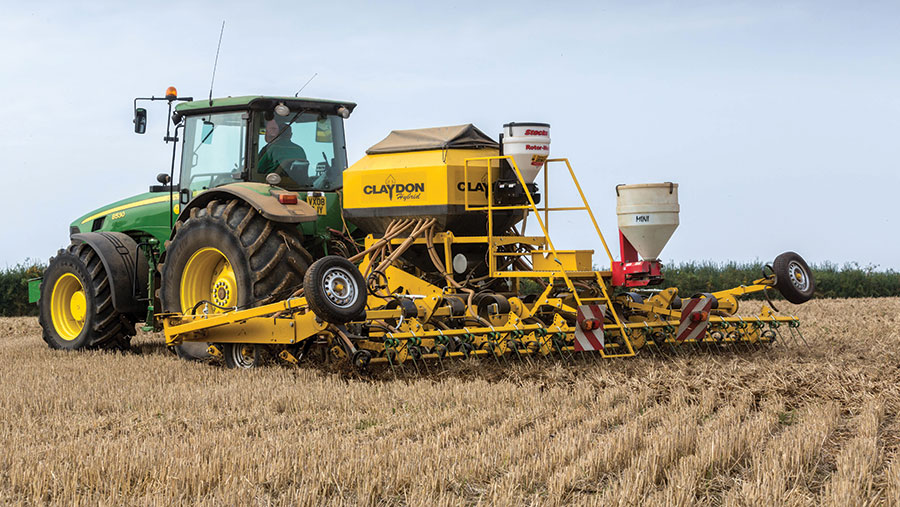Opinion: Concertinaed autumn workload brings big risks
 © Tim Scrivener
© Tim Scrivener Back in the days when stubble burning was as much a part of blackgrass control as IPU, many of my father’s generation in this area would drill much of their wheat in September before turning their attention to harvesting potatoes and other root crops later in the autumn.
Now forced by this pernicious annual weed to drill cereals on heavy land ever later into October, the major pinch point for us is the first two weeks of the month when it feels like everything needs doing at once.
See also: Opinion – it’s time to tighten up on spending
With diverse broadacre cropping, including a fair lump of maincrop potatoes we bag ourselves, a small pig enterprise and an increasing agronomy area to walk, we don’t really stop from when we start drilling sugar beet in March until we finish drilling after root crops in November.
But the concertinaed workload in October is a challenge for more reasons than one.
Including myself and family, we go from the equivalent of one or two labour units on the farm in winter to three or four for potato planting, combining and summer cultivations, and then to 17 or 18 for the peak autumn period.
It makes the distant memory of combining feel like a relaxing holiday.
It worries me that this isn’t particularly sustainable. Many of us in this part of England have built an agricultural business that are extremely dependent on two dry weeks in October.
We can do all we can with drill capacity and using various techniques to bring our root crop harvest forward – but if, like in 2019, it starts raining at the end of September and it doesn’t stop, we’re all in a spot of bother.
I’ve never yet combined a field of spring wheat and thought: “I wish I hadn’t bothered with all that winter rubbish – this stuff will easily pay the FBT rent.”
Condensing your workload into ever-more concentrated periods is not very good for your labour or machinery profile, either.
We are extremely lucky to have a large and flexible workforce. With the help of one skilled full-timer and some fantastic casuals, neighbours and contractors, we usually get the job done in good time.
While this comes at considerable expense, the cost of either missing the small drilling window available on heavy land or letting your spuds wallow around in the slop until mid-November could be even higher.
Once fairly complementary to each other, the work profiles of combineables and root crops are now mostly exclusive, and are another reason why agriculture is increasingly an industry of large specialists.
Storm Babet, fresh in the memory as I write this, was much kinder to us than those just a few miles to the North, and a great deal kinder to us than some in Scotland and northern England.
We had all our spuds safely in store and most of our wheat already drilled when it hit. But even so, it’s served as another 2019-esque warning.
We can do all we can to mitigate risks. But with ever-decreasing area payments to steady the ship and a huge gulf between the margins of most winter and spring crops, it feels like we’re all playing with fire.
